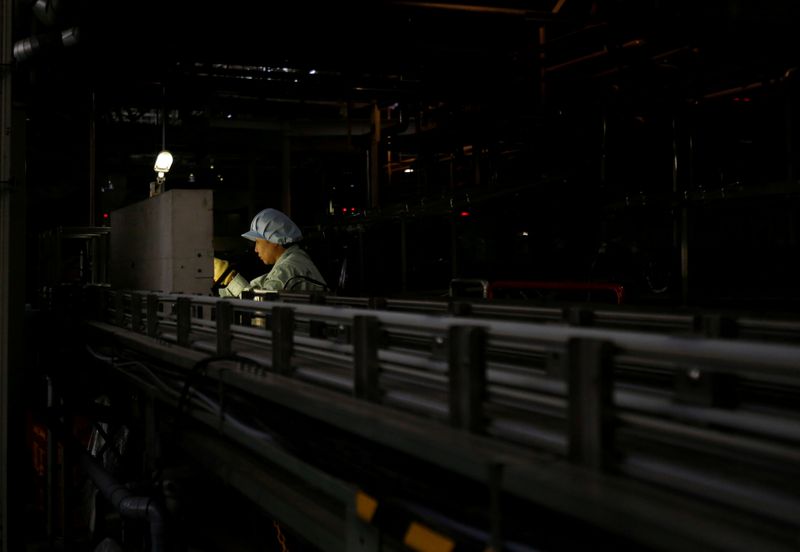TOKYO (Reuters) – Japan’s factory activity ended a record 19-month run of declines in December as output stabilised for the first time in two years, suggesting manufacturers are shaking off the negative impact from the coronavirus pandemic.
The private-sector data contrasts somewhat with last week’s government figures that showed industrial output growth stalled in November because of declines in car production on weakening U.S.- and Australia-bound shipments.
The final au Jibun Bank Japan Manufacturing Purchasing Managers’ Index (PMI) rose to a seasonally adjusted 50.0 in December from the previous month’s 49.0 and a preliminary 49.7 reading.
The headline index hit the 50.0 threshold that separates contraction from expansion for the first time since April 2019, largely because output and employment conditions stopped decreasing, ending the longest run of declines on record.
“Japanese manufacturers signalled a broad stabilisation in operating conditions at the end of a tumultuous year,” said Usamah Bhatti, economist at IHS Markit, which compiles the survey.
The PMI survey also showed overall new orders declined at the softest pace since December 2018. Growth expectations for the year ahead rose on hopes that the COVID-19-induced downturn will fade and new product launches will stimulate demand.
“Businesses reported a sustained increase in optimism, with a third of respondents predicting a rise in output over the coming 12 months,” Bhatti said.
The survey results were not completely rosy, with export orders falling at a faster rate for the second straight month thanks to restrictions recently imposed over the coronavirus in major export markets, particularly in Europe.
Purchases also fell at a quicker pace from the previous month, with lower production and order volumes leading to a reduction in raw material purchases.
(Reporting by Daniel Leussink; Editing by Sam Holmes)



















